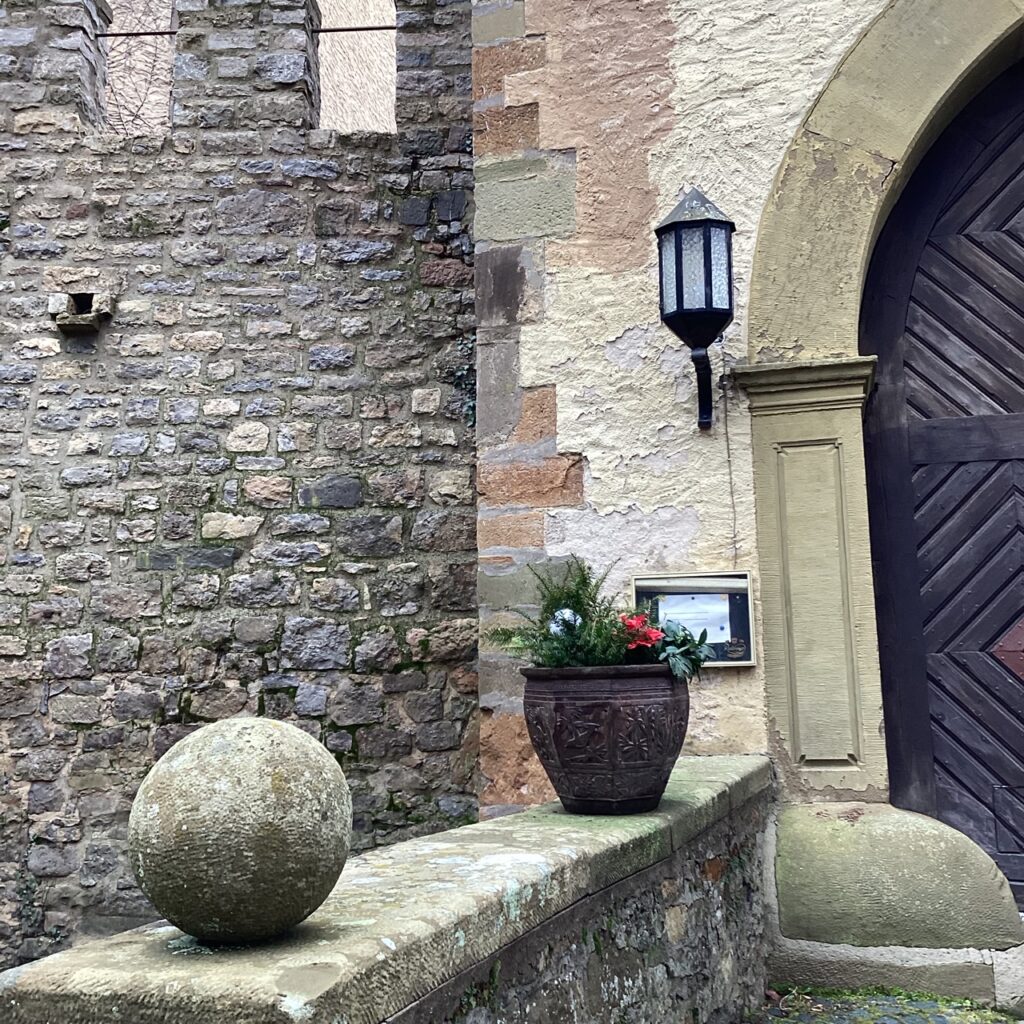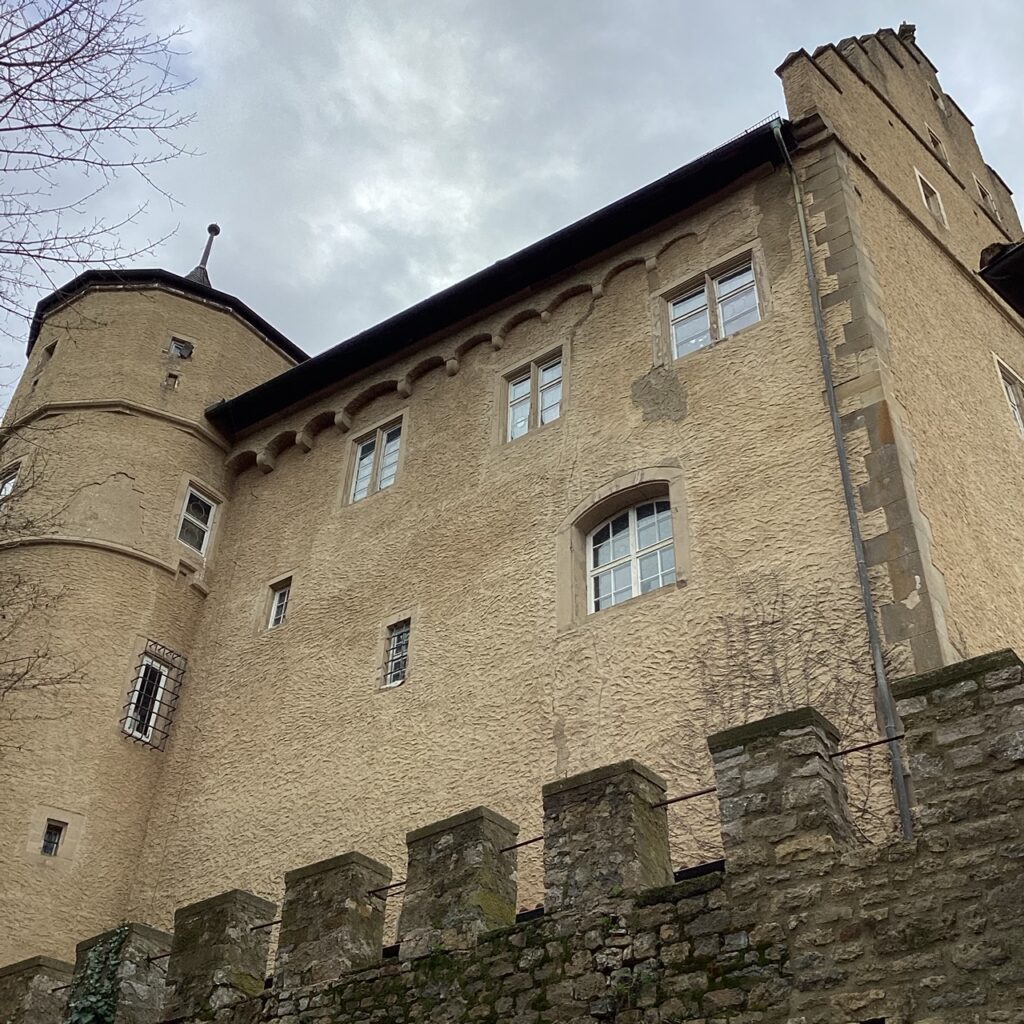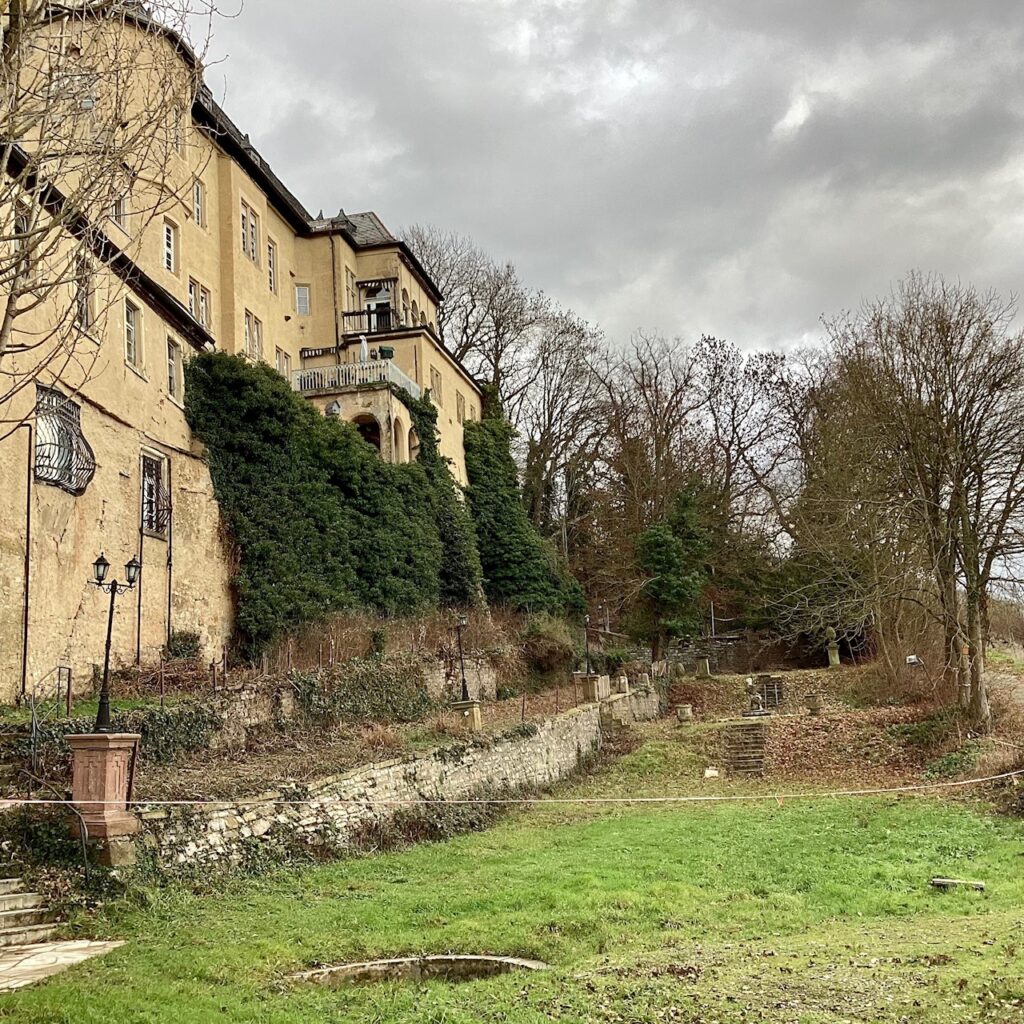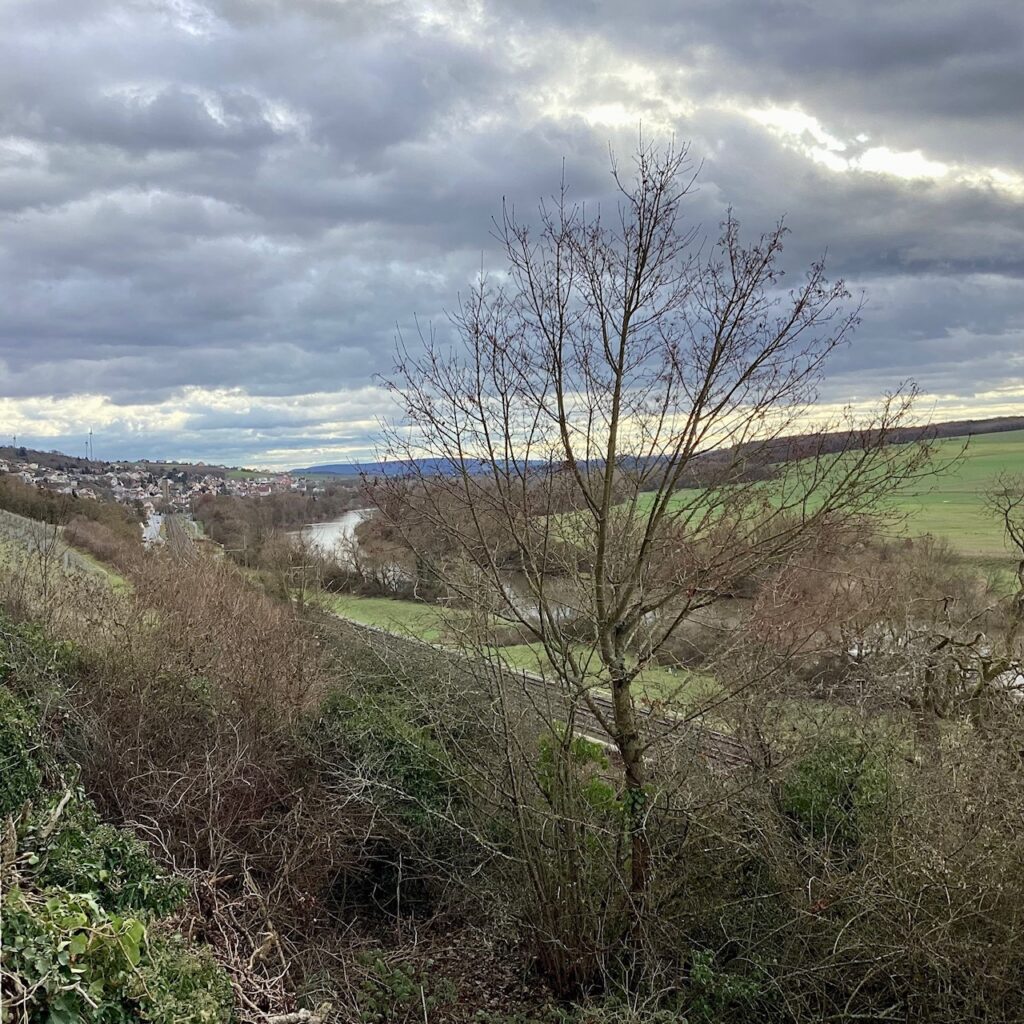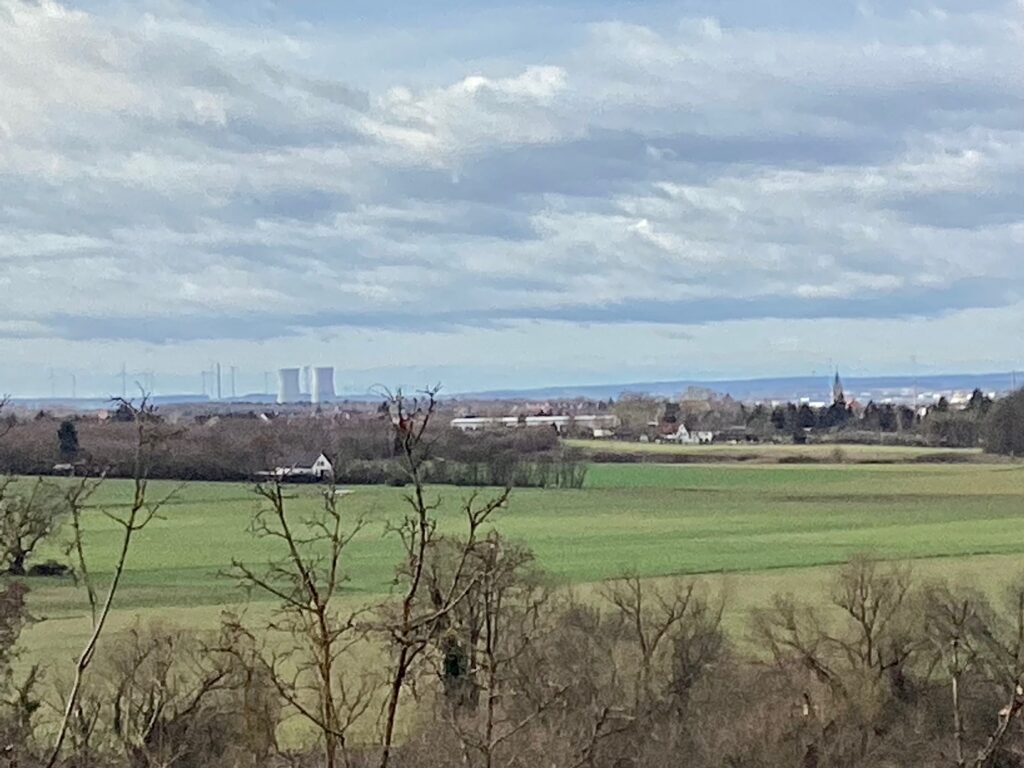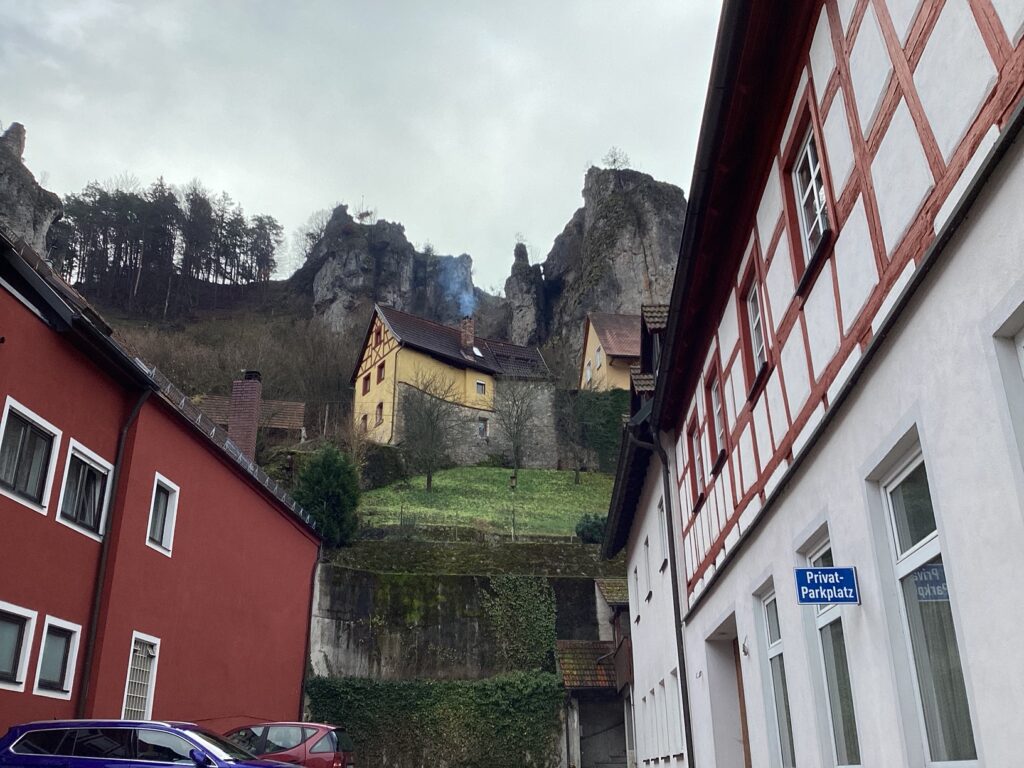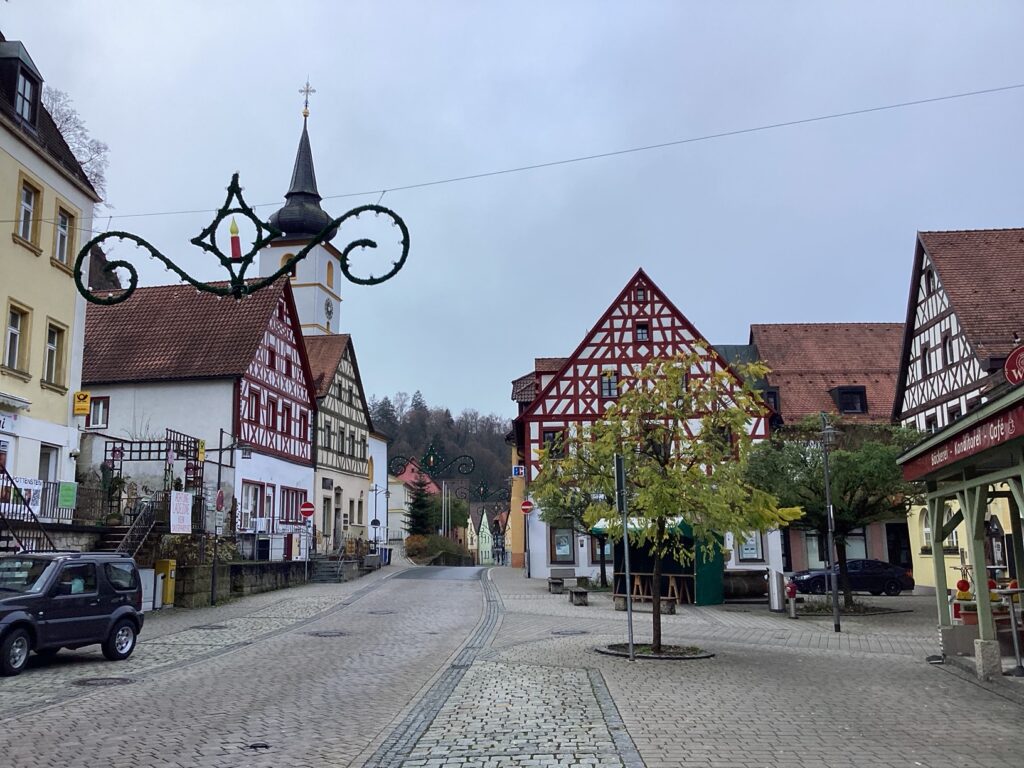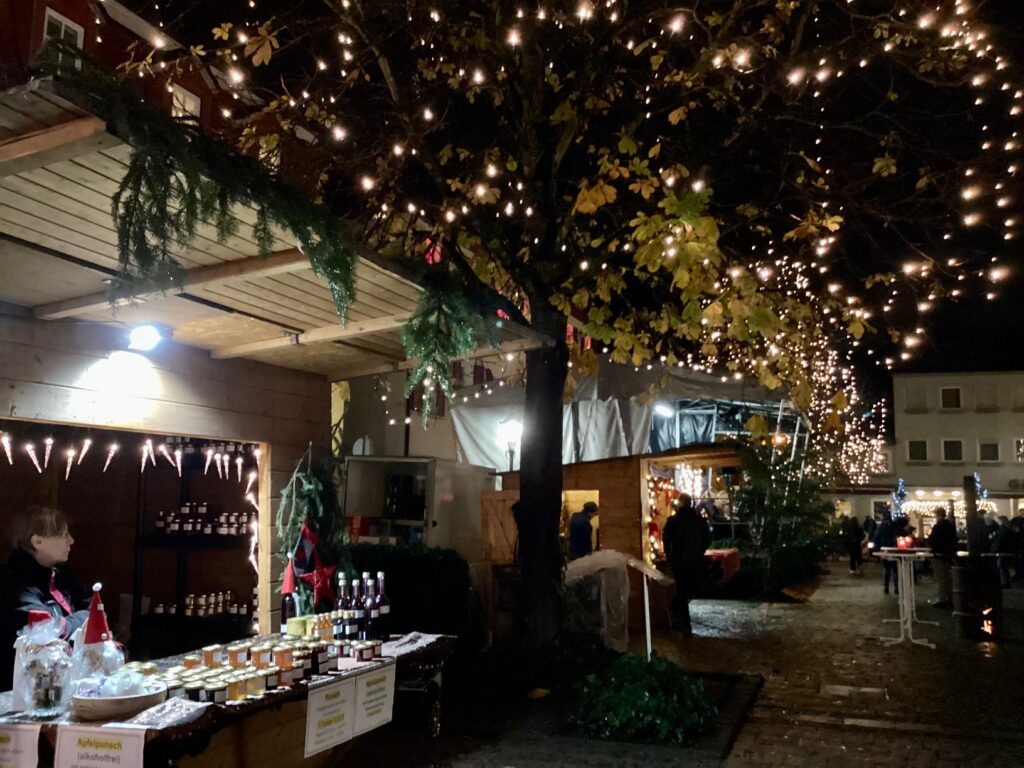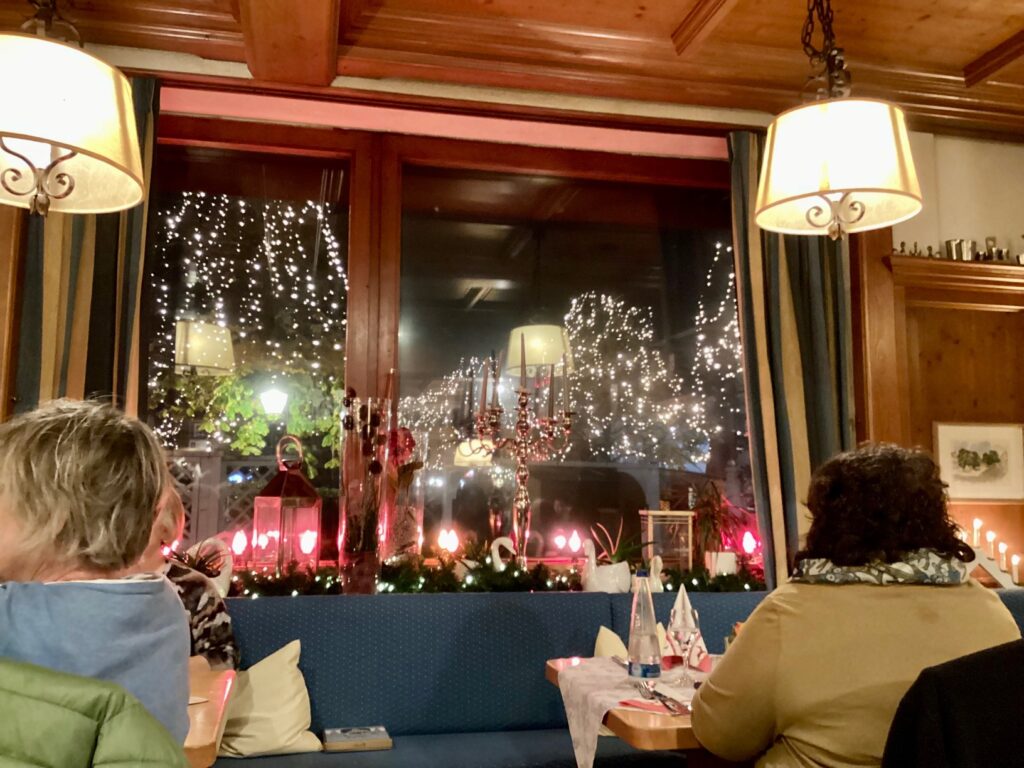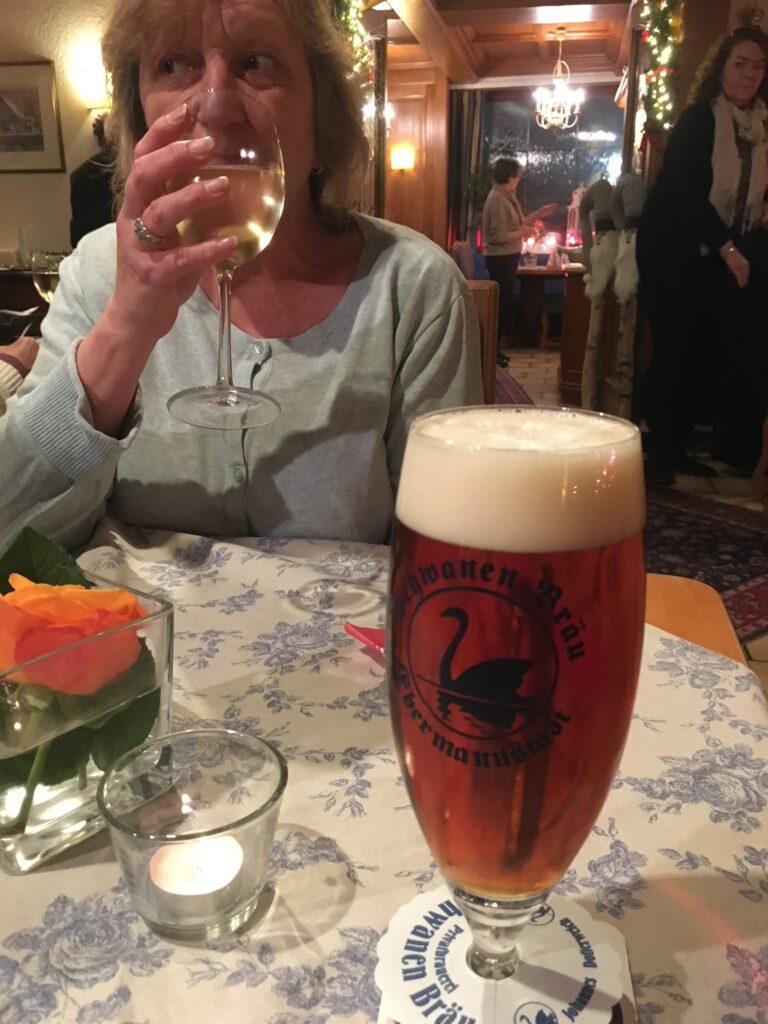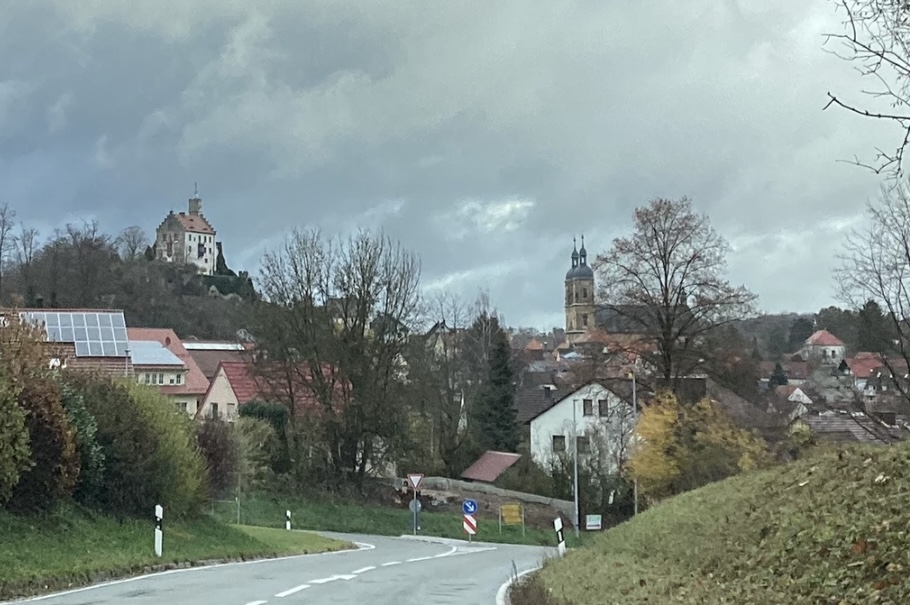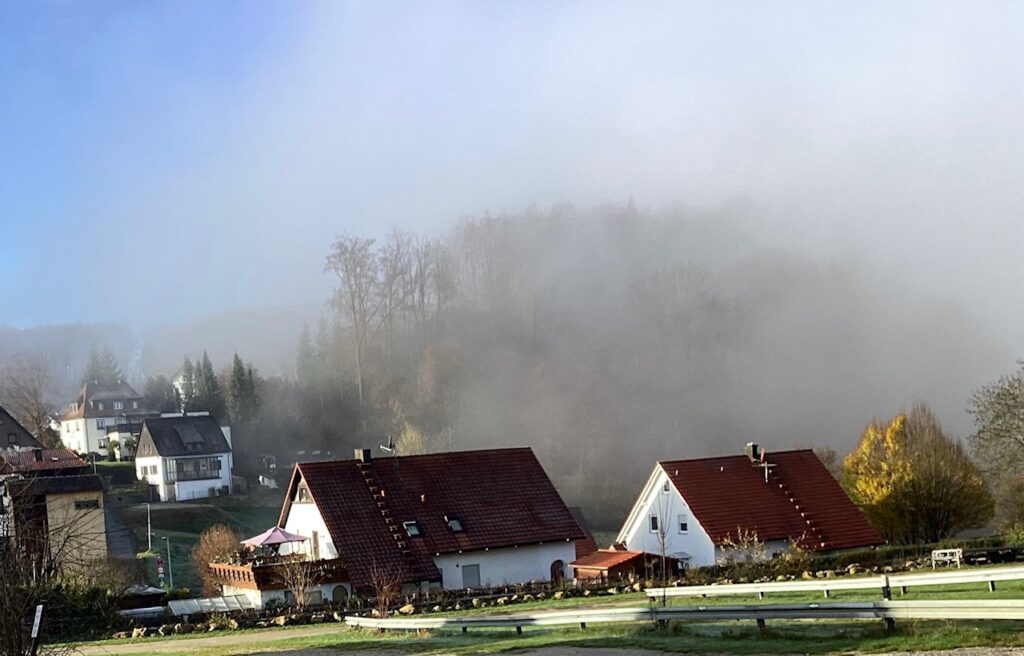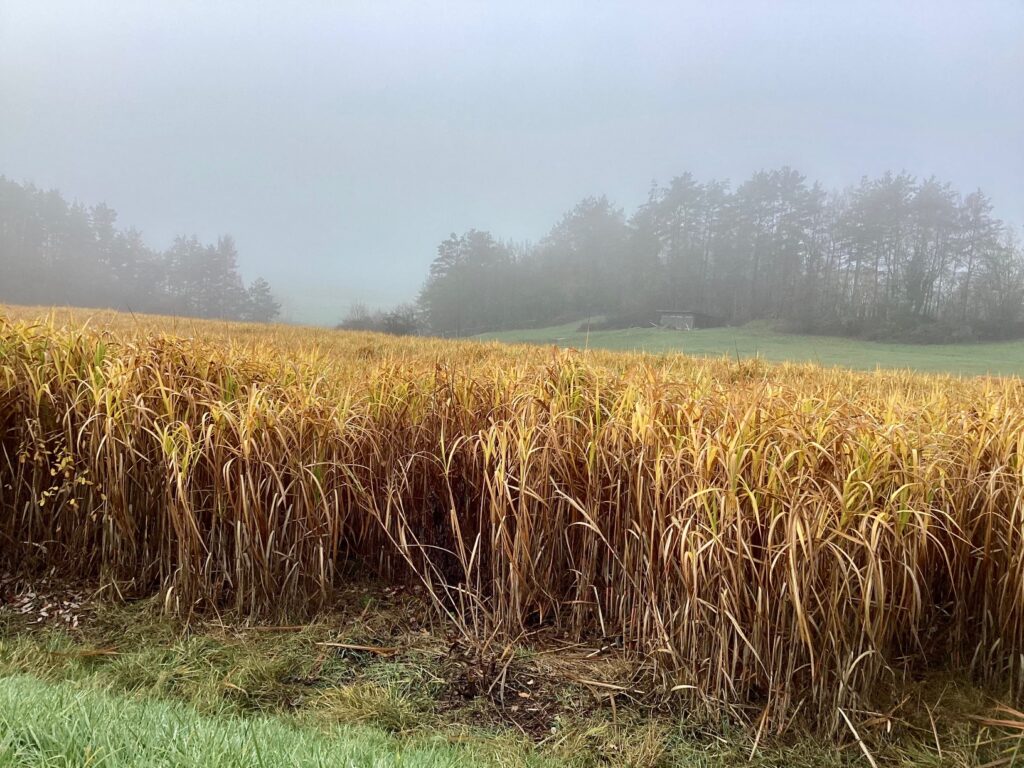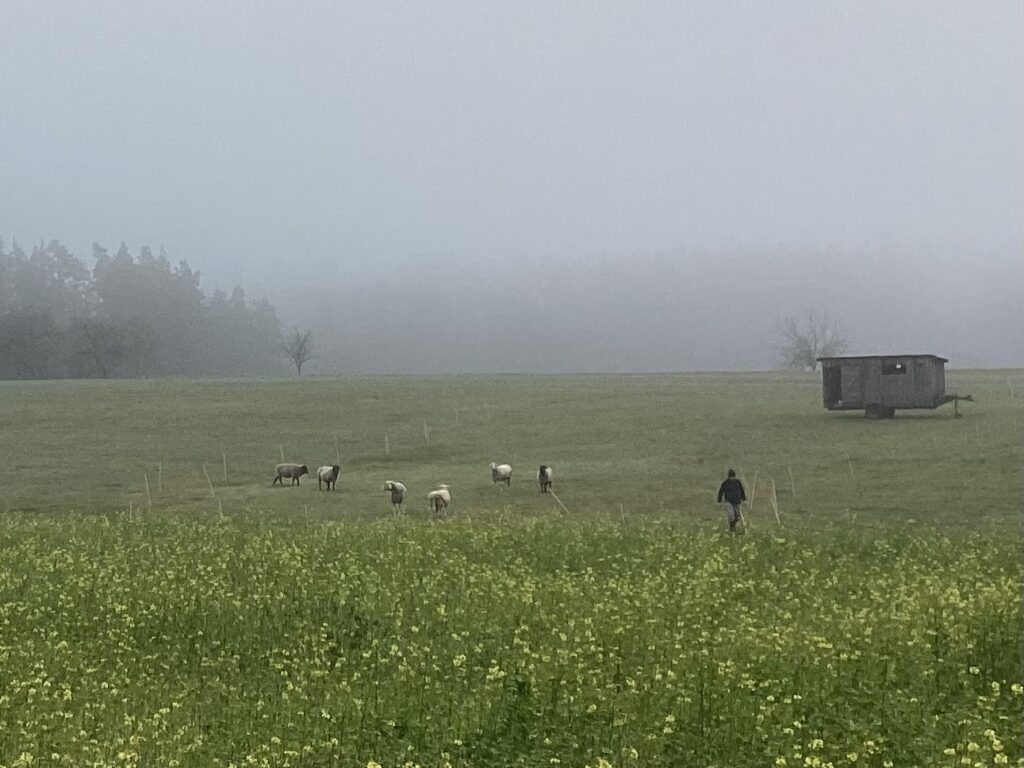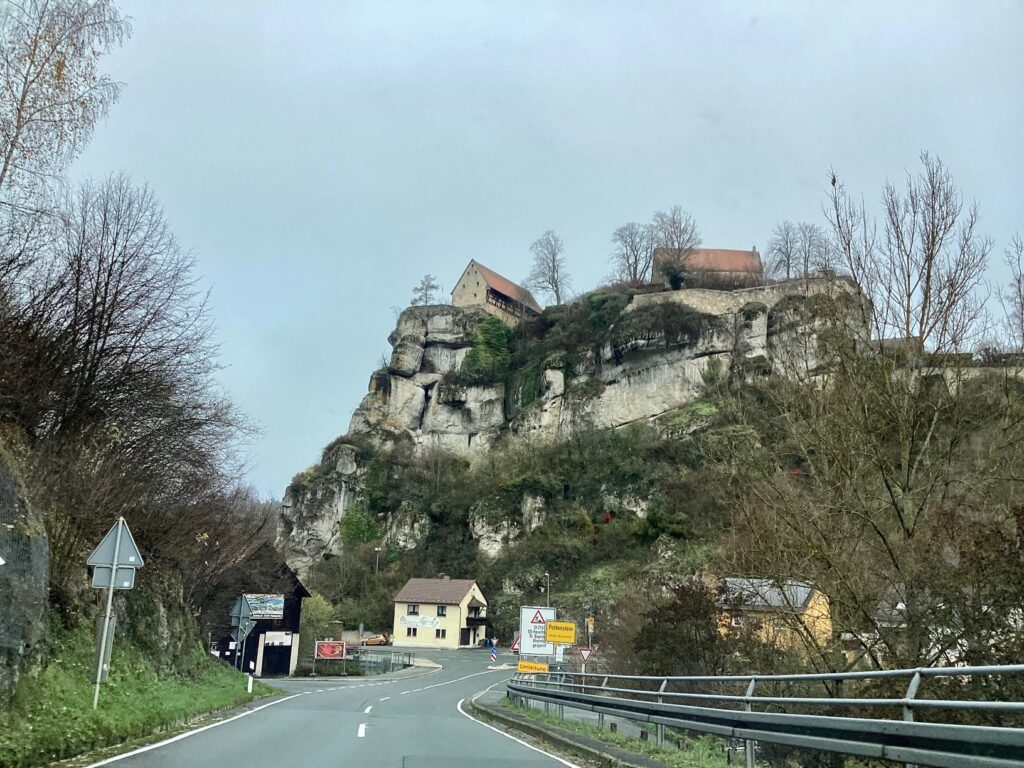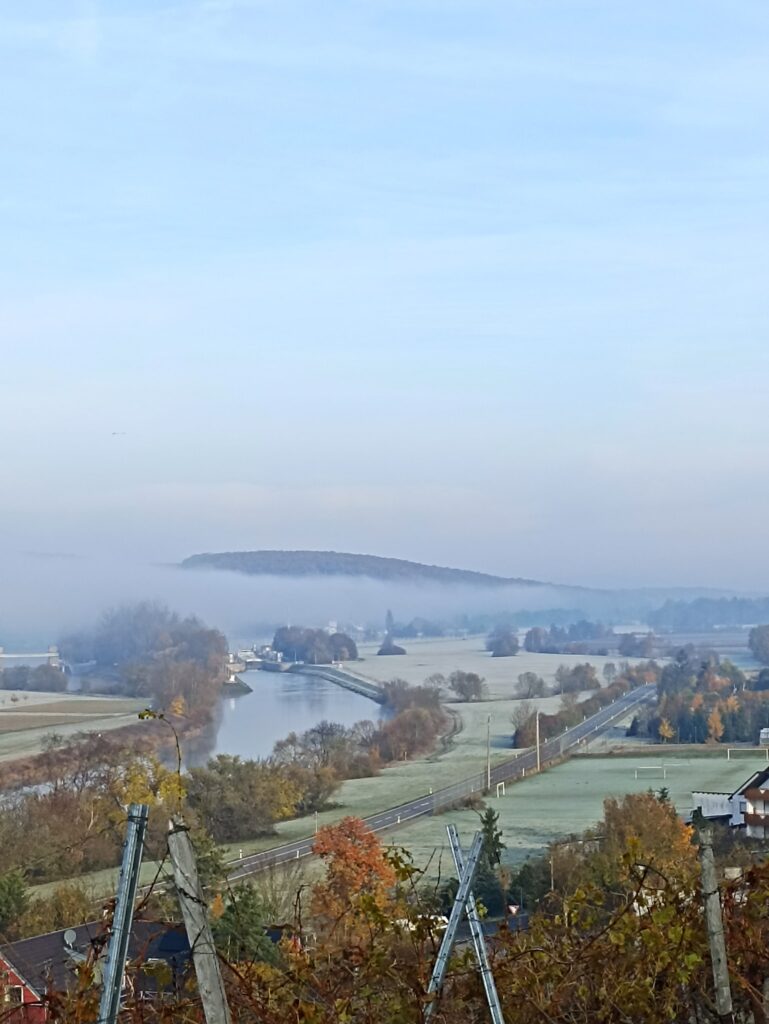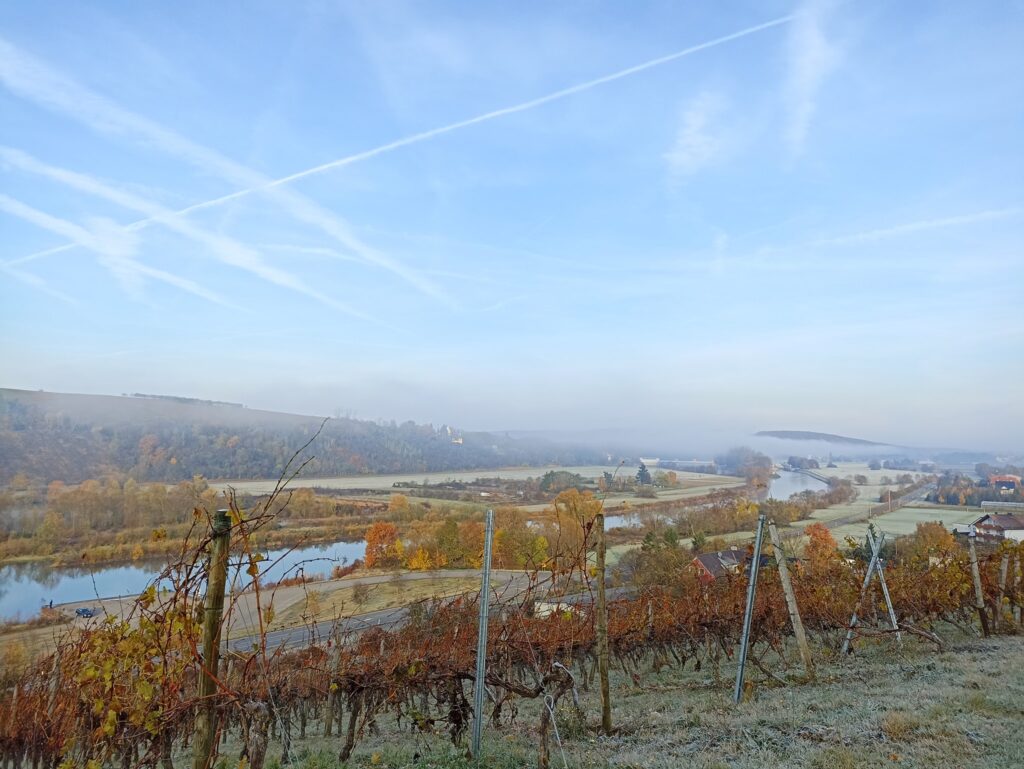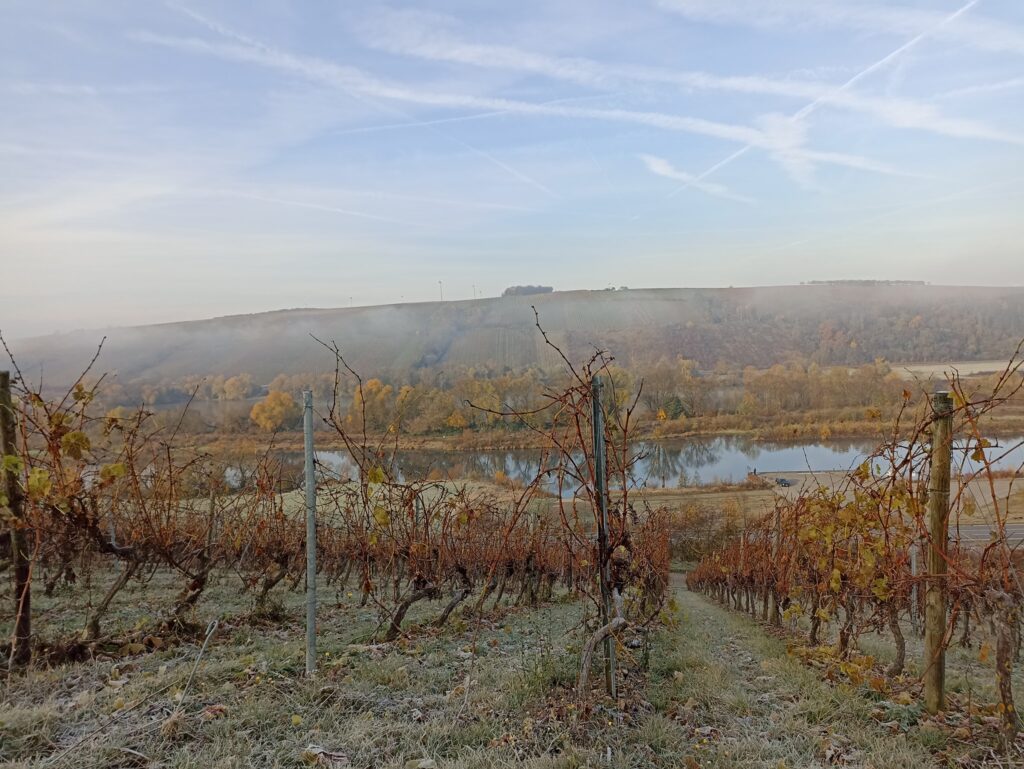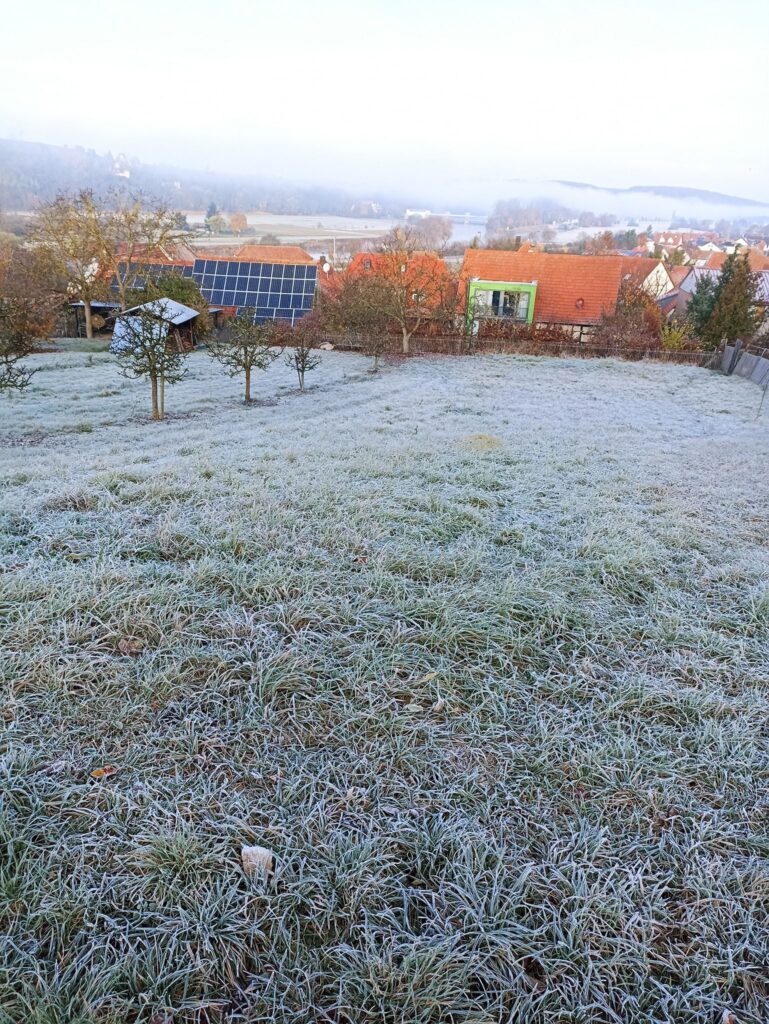For the past 18 years, I have been trying to pass on this homemade Schnaps to my friends. Whenever they come for a visit, they have to have a little shot of schnapps to help me get rid of it. It is from the 1960s, and its alcohol content is around 60-65%.
When my father passed away in 2005, I was given this demijohn wrapped in packing straw and a metal basket. I guess it holds about 50 liters. When we first got it, I did not check to see how much schnapps was left. Instead we filled some into a jam jar, and stored the demijohn in the basement.
Since then, my husband has taken frequent trips to the basement, where he needed a second pair of hands to pour it into the same jam jar. Every time he came back up, I asked him, if it were empty yet. He always replied, “Not yet.”
18 years later… we still have some, and I have stopped asking. Instead, we brought it upstairs, so it can spend its final years in good company and daylight.
Back then, when I took it off my brother’s hand, I imagined to use this little artifact sometime soon for an up-cycling project. Well, I use it now for decoration. As is. 🙂
When I was a young girl, I had to help with collecting the fallen plums. We did not have protective gloves either, when we reached into the nettles to retrieve most of them.
Then the plums were taken to a neighbor, who was the only one with a distillery in the village.
In the 1960s, we had no dentist in the village. When we kids had a toothache, we were told to rinse our pain away with schnapps. When our live-in aunt had a fever, her room smelled like schnapps because of the leg compresses she made from soaking them in it.
Growing up, I had never actually seen anybody drinking this stuff. I only thought of it as a pain reliever.
Now it has become a family joke. “You want to come for a visit? You know you have to have some of Opa’s schnapps!” Once, we actually used it as a pain reliever. One of our American friends arrived from Amsterdam with a bad toothache in tow. While he was here, he used schnapps to tie him over before he could see his dentist in Croatia a couple of days later.
Another time it became a study object of a former student of mine, who, at the time of his visit, studied history at university in Korea.
This schnapps has provided us with so many funny moments to share and remember. For that, I’m forever grateful.


